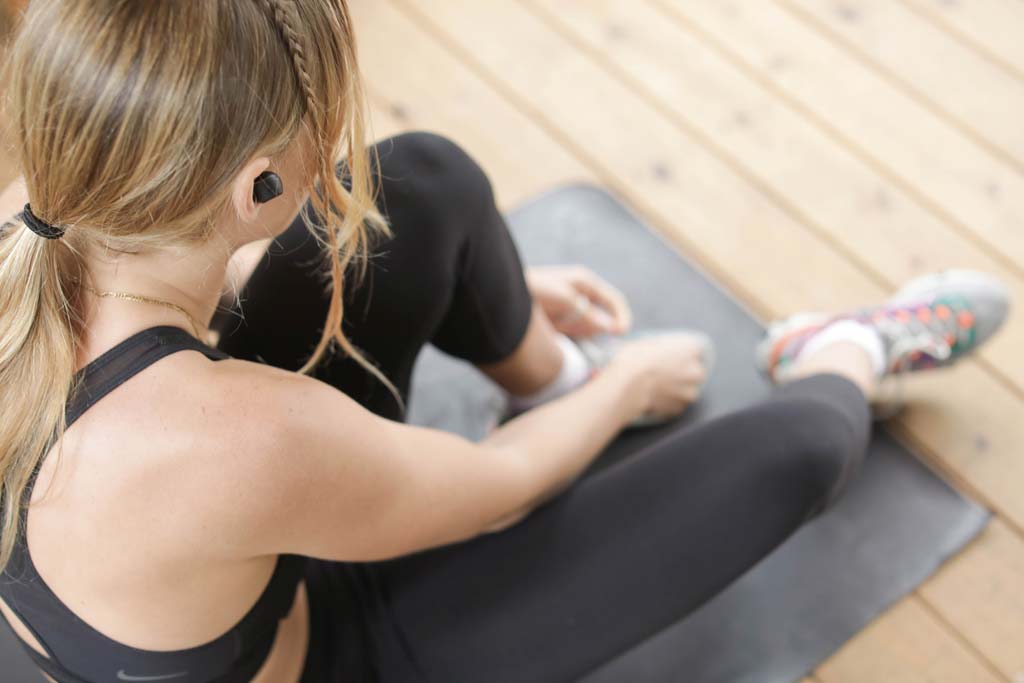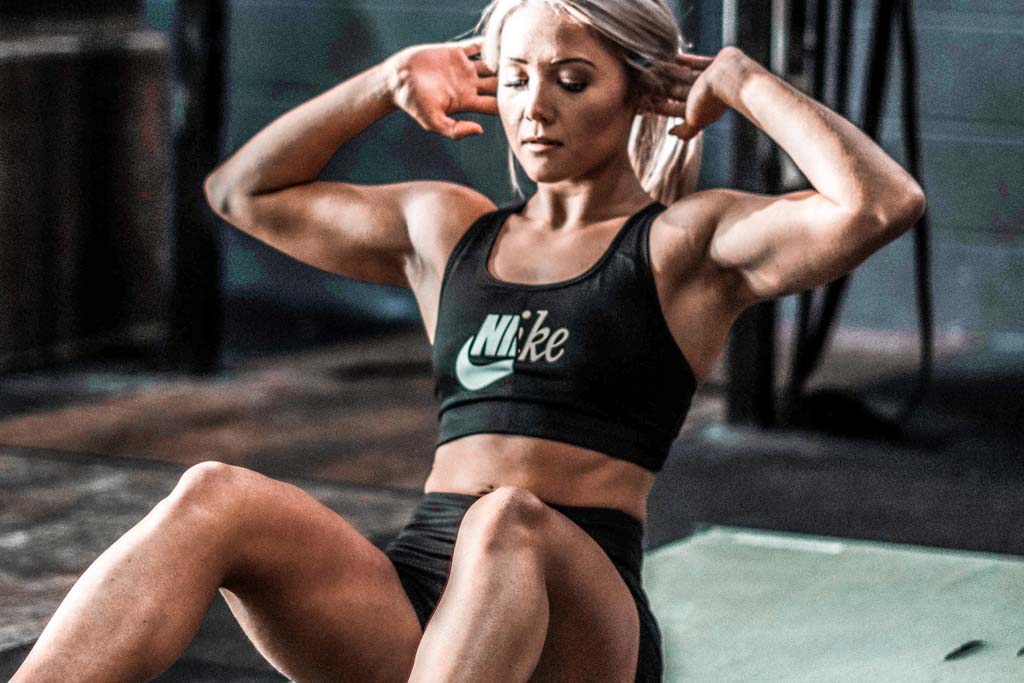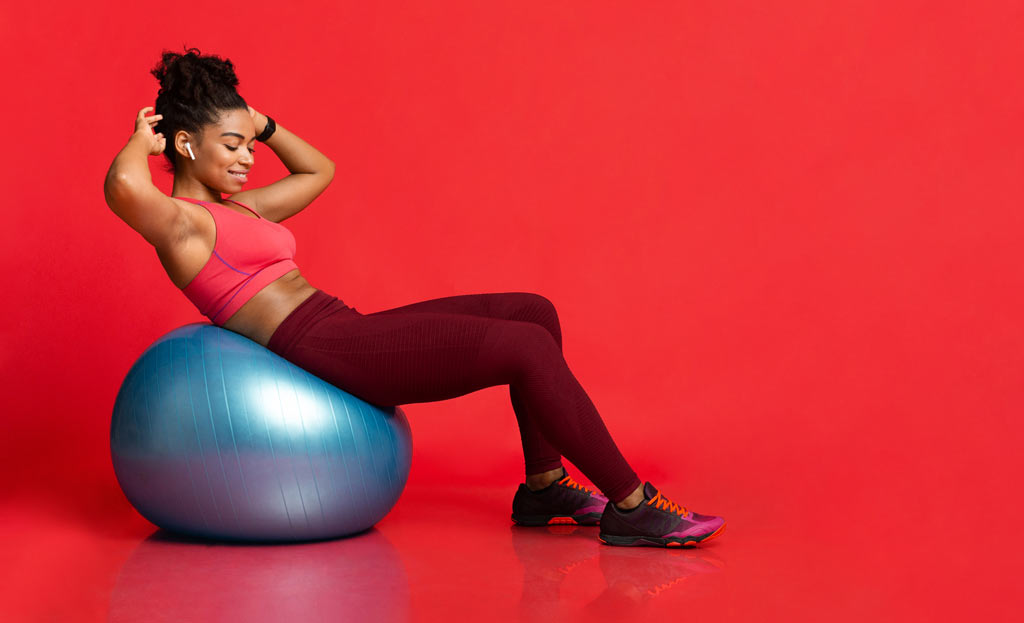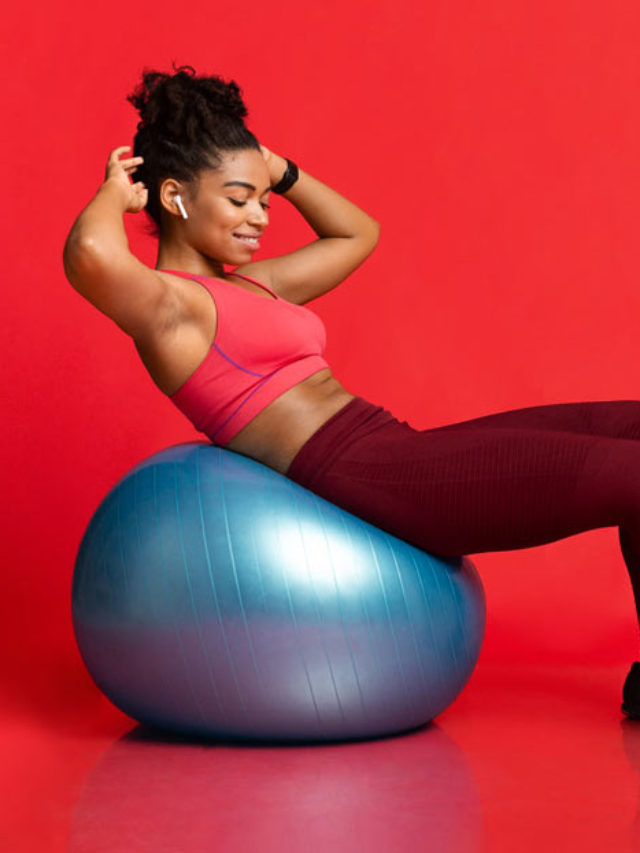So you want to get fit, but need a beginners’ guide? Look no further.
For complete beginners, getting fit can be intimidating. What do you do at the gym? How do you work out at home? What equipment do you need? On top of it, your friend, your sister, your boyfriend and the internet all tell you different things.
The bad news is that the sh*tstorm of opinions doesn’t go away once you learn more about working out. The good news is that you don’t have to pay attention to most of it if you know what you’re doing.
Getting fit is simple. You don’t need to pay a lot of money, invest in equipment or follow some crazy diet or routine. There are also many, many paths from beginners’ realm to fit and fabulous, so beware of absolutes, or those who tell you their way is the only way.
There are some general rules to go by, however, and likely you’ve heard them before. Getting fit will take work and dedication, but it will also be one of the most rewarding gifts you can give yourself.
The no-nonsense guide to getting fit for beginners (and really, everyone).
Show up.
This post may contain affiliate links. Please see my full disclosure here.
The most important part of getting fit—for beginners or experts—is not how long you work out, how much weight you lift or how fast your heart rate is. The most important thing is showing up.
Simple, yes. Stupid, maybe. But let’s worry first about establishing a habit, then you can adjust your workouts from there.
Start small.
Don’t jump in the first day with an hour-long workout and pledge to do the same for six days in a row. It won’t happen. You’ll get sore, burn out, and lose your momentum.
It’s much better to start with small workouts several times a week to build the habit. If you’re a complete newbie, or you’ve been out of the game, you can start with HIIT and more intense workouts that are just 10-15 minutes a day. If you’re doing something more moderate or low impact, go for 20-30 minutes a day.
(And if you want a free ebook of mini-workouts (15 minutes and under), you can snag it here. You’ll sign up for my newsletter, but you can unsubscribe anytime)
Make a weekly frequency goal.
It’s much easier to stay on track if you keep yourself accountable on a weekly basis. Getting fit is about a habit, and for beginners, the hard part is establishing that habit.
If you found a program you want to follow, it probably says how many times a week you should work out. Otherwise, decide how often you want to work out. It depends on what tools you have available, your life situation (kids, job, etc.) and your time.
Make sure you’re getting exercise at least three times a week. However, I suggest four to five, even for beginners trying to get fit.
If you work out more days than you rest, it’s easier to establish the habit. While three times a week is perfectly acceptable, you might actually find it easier to work out if you make a goal of four or five times a week. That way, it’s more like a daily habit that you take a break from, rather than something you make time for a few days a week.
But again, the most important thing is that you show up. Also, setting a goal and sticking to it tells yourself that you’re capable of setting and reaching goals, and makes you more likely to reach goals in the future. Pretty cool, huh?
Make it fun (ish).

You need to enjoy your workout. If that sounds impossible or crazy, then think of it like this: You need to enjoy the benefits that your workouts give you. Maybe it’s not always “fun” to run four miles or lift heavy stuff, but it feels great afterwards. Plus, seeing yourself fitter and healthier is great incentive to do more.
This is true for beginners and experts alike, whether you’re getting fit the first time or maintaining a lifelong fitness plan. Find out what fitness plan works for you, and make enjoyment a top priority in your workout. What drives you to exercise, or what do you think would drive you? If you’re not sure, then try something out and assess.
The workouts I do here on this website are intense, efficient and challenging. They involve strength training and metabolic training in one, and I do a different workout every day because I get bored of the same ol’ workout.
If that sounds like you, great! You can check out my workouts here. I can also suggest Hannah Eden’s workouts, especially her first FYR program, her FYR 2.0 8-week program, Zuzka Light, Tatianna at LovingFit and Melissa Bender. Many people love Fitness Blender too, though I’ve never tried them. All of these sites do metabolic resistance training, including a lot of HIIT.
Practice good form.
Don’t be lazy about form. Whichever program you’re doing, listen to the instructor when they tell you proper alignment. If you’re self-teaching yourself, look it up on the internet. There are loads of tutorials online (people love to tell people how to do things wrong). Once you understand the basics, it will get much easier.
If you’re doing a workout that’s timed, like HIIT, make sure you’re not sacrificing form for reps. It’s very easy to do, especially if you want to get in as many reps as possible, but it’s not worth it. First of all, you won’t get the benefit of the exercise if you’re not stimulating the muscles correctly.
And secondly, you can injure yourself if you’re not doing an exercise correctly.
So, listen to your instructor and/or do your research. You’ll go from the beginner to fit much faster if you do.
Start light—with bodyweight.
Bodyweight workouts (calisthenics workouts) can get you just as fit as weighted ones, whether you’re one of the beginners or one of the experts—it just depends on how you train. In other words, it’s not the size of the weight, but how you use it. (Ahem.)
Bodyweight workouts are amazing because they allow you to perfect your form and get comfortable in your body without much risk of injury. There are plenty of modifications you can do for bodyweight that will keep you engaged as long as you like. At some point, you’re welcome to add weights, but make sure you have a firm understanding of the exercises first.
Start simple.

Just do the basic versions of movements before getting complicated. If you’re an absolute beginner, stick to regular push ups (or knee push ups) instead of any variations, alternating back lunges instead of side lunges or jump lunges, regular squats instead of jump squats, and so on.
In fact, feel free to leave out any and all jumping. Practice te moves for at least a week or two without them.
Master the movement until it gets repetitive, then change it up.
Set a realistic goal.
The beautiful thing about fitness (well, and life, really) is that your goals will keep changing. While it’s great to shoot for the moon, blah blah blah, fitness is mostly a very scientific and practical arena. Like it or not, you’re limited by certain things: your genetics, your biology and the practical aspects of your workouts and your diet.
The only things you can control are how you work out and what you eat. So, think of a small goal at first that would still make you really proud of yourself. Maybe it’s losing 10 pounds, or being able to do one real push up.
It doesn’t mean you don’t have bigger goals, but let them go for a future you. Besides, when you set a goal and achieve it, you send a message to your subconscious that you accomplish goals. Then, you’re more likely to believe in yourself for the next goal you set. Pretty cool, huh?
Keep track of your workouts.
A workout journal is the most important piece of gym equipment you can own. It helps motivate you and helps measure your progress—which in turn, helps motivate you. See how that works?
The biggest benefit, though, is the motivation I get from the accountability. It’s like taking notes in class. Half the time, I wouldn’t read the notes I took. However, taking the notes themselves helped me stay focused and learn during class. The act of taking notes helped me remember, just like the act of keeping track of my workouts helps me work at my best.
However, I do use my journal after the workout, too. I use it mostly to find workouts that I want to do if I don’t feel like making up a new one. And I take notes, so I can look and see if it fits what I want to do that day. It also helps to know how much weight I used, modifications, etc.
Keep track of your food intake.
You eat more than you think you do. Period.
There’s a Portlandia sketch called “Sinkles,” about a restaurant that has tables set up like sinks so you can eat like you do at home, standing over the sink. This is soooo me. (And breastfeeding now with extra calorie budget gives me extra leeway to do this.)
My favorite “sinkle” is peanut butter with honey. I call it “Kendra candy.” But sometimes its maple syrup, or jam. Or ketchup (yeah, I know, gross). Or a date, or a cookie, etc. etc.
Once you write down what you’re actually eating, it’s easy to see where you’re going wrong (if you feel you need to). Granted, there’s another step of actually reducing or fine-tuning what you eat, but keeping track in itself is a lesson in shame itself.
I use MyFitnessPal, where you can set a goal, and it has many foods already entered into it. There are many apps or books you can use, however.
Whether you count your macros, eat keto,or just trying to eat cleaner, keeping track will help. Don’t worry, you won’t have to keep track forever. And for a while, you might even find it kind of…dare I say…fun.
Eat whole foods.

Regardless of whether you decide to follow a diet or not, you should always aim to eat a diet consisting of mostly whole foods. Whole foods are just items that are minimally processed and don’t have additives or artificial ingredients added.
Basically, it means you should prepare your own meals as much as possible with fresh items from the grocery store: produce, meat, grains, etc.
Eating whole foods ensures that you are getting as much nutrition as possible. Aside from the long-term benefits of eating well, you’ll also get short term benefits like more energy and getting fuller faster. If your goal is weight loss and you need to eat at a calorie deficit, eating whole foods will make that much easier.
When buying prepared foods like peanut butter or pasta sauce, make sure there is no added sugar (especially high fructose corn syrup), hydrogenated oils, artificial coloring or fstrange ingredients you can’t pronounce. A short list of ingredients is always good, and remember that the higher the item is on the list, the more prominent it is.
Another main component of eating whole foods is eating whole grains. Get the whole wheat bread (that’s 100% whole wheat), not any other kind. And eat brown rice instead of white when you can.
And remember—these are guidelines only, and it’s a spectrum. You can still have white bread or that Trader Joe’s salad, but minimalize eating those items when you can.
Eat for fuel, not for comfort.
This rule is hard, but it will help you: Remember that food is for fuel, not for comfort. Eat what will give you the best possible energy for what you need to do, and don’t eat past the point of being full. Like I say above, if you’re eating good, whole foods, this will be much easier to accomplish.
Also, try not to create rewards and punishments around what you eat. You deserve to fuel your body with nutritious and delicious food. It’s not a punishment to eat healthy, and it’s not a reward to eat junk food.
I realize there might be other issues making this part very difficult for you. If you have a problem with food in any way, consider seeking outside help.
In any case, this one is more of a psychological boundary, so take your time with it. You might come to realize it on your own, once you’re tracking what you eat and therefore tracking your hunger along with it.
And again, it’s a spectrum. Of course you can go crazy and eat just for pleasure sometimes, just don’t make it an all-the-time thing.
Quit or minimalize drinking.

Oof, I’m going to get people hating me for this one. That’s why it’s at the bottom of the list. 🙂
I’ve talked before about how much my life improved when I quit drinking, and how society makes quitting alcohol seem much harder and scarier than it actually is.
But look. I am not saying you need to quit drinking to get fit. You don’t. I was fit for many years and drank a bucketload. Or, “fit,” anyway.
However, I did make fitness so much harder for myself. And let’s face it: How “fit” can you be when you’re drinking too much? You can have a 6-pack and also have liver damage. In other words, looking fit and being (or feeling) fit are different things entirely.
Does that mean you should never partake? Not necessarily. The bottom line is that alcohol is a drug, and we partake because it’s a drug—not for the taste or the heart benefits (which are slowly becoming debunked anyway). Approach it with open eyes, rarely, and with caution.
But most importantly, it will set your fitness goals back. Not only is it empty calories, it will make you eat more, work out less, and generally feel crappy about yourself. I mean, no one ever woke up thinking, “Man, I wish I had more to drink last night.”
And if you’re thinking, “Well, I don’t drink that much, so surely I can drink every now and again?” Yes. You know best. But if you’re lying to yourself and actually find that it’s hard to take a night off, or stop after one or two, then maybe you should look into saying goodbye forever.
And listen—not drinking doesn’t mean you can’t have fun. There are plenty of really fun things to do that involve no alcohol. And if your friends are out getting drinks, if you can, order a tasty mocktail (my favorite is tonic water and grapefruit). If you can’t, organize something else. I promise you that your conversations will be way better when you’re all sober.
How to continue your fitness journey.
So once you establish a habit to get fit, but you’re no longer in the beginners’ club, then what?
The most important thing is to keep challenging yourself. The same workouts will get easier as you get fitter, so increase the intensity by adding weight or modify to harder exercises. If you started with bodyweight, then adding weights will be an interesting and exciting step to add into your routine. Just remember to start light and progress slowly.
The best barometer for how well your workout is serving you is if it feels challenging. When doing strength training, you should find it harder and harder to bust out reps. If you’re doing a cardio workout, you should get winded and your heart rate should be elevated the proper amount.
I mean, you know if you’ve gotten a good workout. You’ll feel it.
If you’re tracking workouts, like I suggest above, then you can see what you did last time, and adjust from there. You can also see your progress really easily, which builds confidence and momentum in your fitness habit.
And then? Continue on your journey with all the steps above—they all apply for intermediate to expert fitness enthusiasts (even using bodyweight and calisthenics exercises). The first steps are the hardest. Once you have the habit down, it will hopefully be a part of your life you find easy to make room for, and actually enjoy.
Getting fit as a beginner is much simpler than it seems.
The wonderful thing about fitness is that it’s just a formula.
I mean, yeah, some people are more genetically gifted in certain ways, or build some muscles more or in certain ways. But everyone can get fit for their body. You just need to put the work in.
Related getting fit for beginners posts:
- How Much Weight Can You Lose in a Month?
- Why Calisthenics Should Always Be a Part of Your Workout Program
- Get Fit Fast: How to Get a Better Workout in Less Time
- 28 Benefits of Strength Training That Will Get You off Your Butt
- How to Track Workouts So You Can Reach Your Fitness Goals (+FREE Printable)
- Broke Fitness: How to Work out for Free
- This Is Why You Can’t Figure out How to Get in Shape


